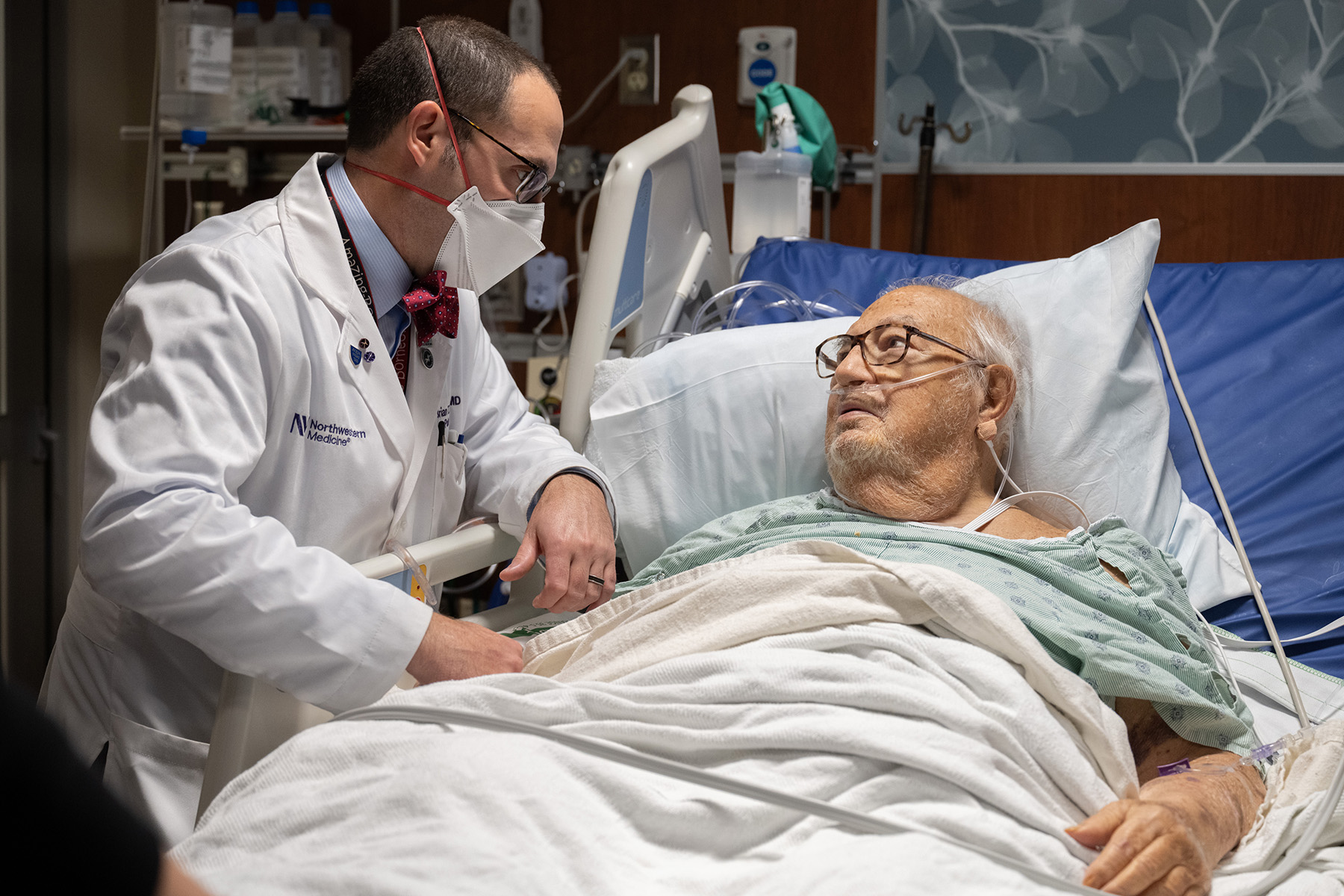
Treatment with endovascular thrombectomy did not significantly improve outcomes after 90 days in patients with a large core stroke, as compared to patients who received standard stroke care alone, according to a recent clinical trial published in JAMA.
Sameer A. Ansari, MD, PhD, a professor in the Ken and Ruth Davee Department of Neurology, of Radiology in the Division of Interventional Neuroradiology and of Neurological Surgery, was a co-author of the study.
In the current trial, the Thrombectomy for Emergent Salvage of Large Anterior Circulation Ischemic Stroke (TESLA) trial, a total of 300 patients presenting within 24 hours with large core infarcts – strokes that cause irreversible brain tissue damage in a large area of the brain – as detected by a noncontrast CT scan were randomized to undergo endovascular thrombectomy, a minimally invasive surgery that removes blood clots to restore blood flow to the brain, or standard care alone.
“The results of recent large core thrombectomy trials were counterintuitive because earlier positive trials demonstrated an enormous benefit of stroke thrombectomy by pre-selecting for the ‘best patients’ most likely to benefit or patients presenting with small core infarcts, suggesting a larger amount of tissue was still salvageable or could be saved after vessel recanalization by emergent interventional thrombectomy procedures,” Ansari said. “However, these large core thrombectomy trials were initiated because there remained a concern that we were perhaps over-selecting for the best patients, and hence denying this very valuable treatment to patients presenting with medium- or even large-core infarcts, that could still benefit from the procedure.”
After a 90-day follow-up period, the investigators found no statistically significant improvement in patient outcomes in the thrombectomy group versus the control group. Mortality was similar between the intervention group and control group (35.3 percent versus 33.3 percent, respectively), and 4 percent of patients in the intervention group and 1.3 percent of patients in the control group experienced 24-hour symptomatic intracranial hemorrhage.
Although the TESLA trial did not confirm a statistically significant benefit of thrombectomy for this patient population, or the findings of other large core trials, the current findings will help establish future standard of care guidelines for stroke intervention, Ansari said.
“More importantly, due to TESLA’s broad inclusion criteria, we realized there is likely a limit to the amount of stroke burden that a patient can suffer and still benefit from stroke thrombectomy,” Ansari said. “Finally, TESLA provided further support to demonstrate that selecting patients alone with basic non-contrast CT imaging may be sufficient for including or excluding patients for stroke thrombectomy and allowing potential cost and time savings in the triage of these time-sensitive interventions.”
Next steps, according to Ansari, may include refining CT imaging selection criteria and identifying populations that will benefit most for stroke thrombectomy while excluding those in which the procedure provides no benefit.
“Other trials and studies are being conducted to further expand the indications for stroke thrombectomy due to its powerful clinical efficacy, such as in patients with more distal or smaller vessel occlusions or those presenting in later time windows with salvageable tissue profiles,” Ansari added.
The TESLA trial was funded through unrestricted grants from Medtronic, Cerenovus, Penumbra, Stryker and Genentech.






